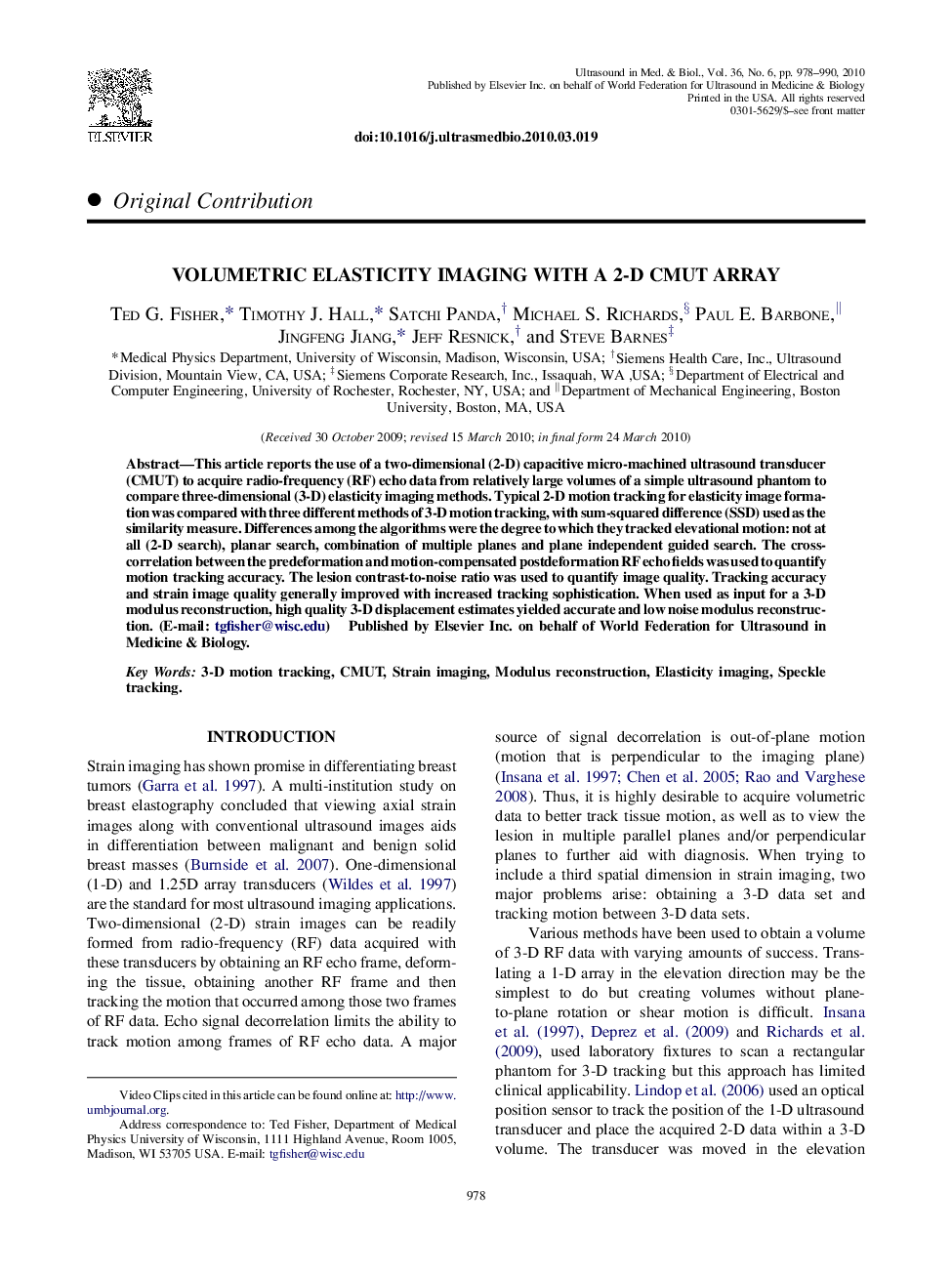| Article ID | Journal | Published Year | Pages | File Type |
|---|---|---|---|---|
| 1761803 | Ultrasound in Medicine & Biology | 2010 | 13 Pages |
Abstract
This article reports the use of a two-dimensional (2-D) capacitive micro-machined ultrasound transducer (CMUT) to acquire radio-frequency (RF) echo data from relatively large volumes of a simple ultrasound phantom to compare three-dimensional (3-D) elasticity imaging methods. Typical 2-D motion tracking for elasticity image formation was compared with three different methods of 3-D motion tracking, with sum-squared difference (SSD) used as the similarity measure. Differences among the algorithms were the degree to which they tracked elevational motion: not at all (2-D search), planar search, combination of multiple planes and plane independent guided search. The cross-correlation between the predeformation and motion-compensated postdeformation RF echo fields was used to quantify motion tracking accuracy. The lesion contrast-to-noise ratio was used to quantify image quality. Tracking accuracy and strain image quality generally improved with increased tracking sophistication. When used as input for a 3-D modulus reconstruction, high quality 3-D displacement estimates yielded accurate and low noise modulus reconstruction. (E-mail: tgfisher@wisc.edu)
Related Topics
Physical Sciences and Engineering
Physics and Astronomy
Acoustics and Ultrasonics
Authors
Ted G. Fisher, Timothy J. Hall, Satchi Panda, Michael S. Richards, Paul E. Barbone, Jingfeng Jiang, Jeff Resnick, Steve Barnes,
